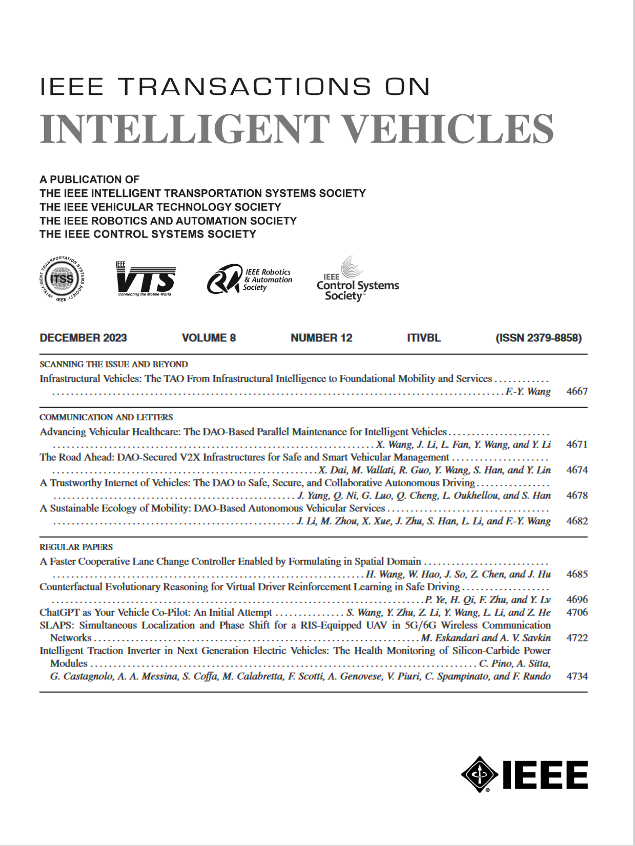用于自动驾驶的天气和气象光学距离分类
IF 14.3
1区 工程技术
Q1 COMPUTER SCIENCE, ARTIFICIAL INTELLIGENCE
引用次数: 0
摘要
天气和气象光学距离(MOR)感知对于平稳、安全的自动驾驶(AD)至关重要。本文介绍了两种基于深度学习的架构,采用早期和中期传感器融合和多任务策略,设计用于AD中的并发天气和MOR分类。利用公开的FogChamber数据集进行的大量实验表明,所提出的早期融合架构具有轻量化设计和简单性的特点,在天气分类中达到98.88%的准确率,在MOR分类中达到89.77%的准确率,竞争内存分配为5.33兆字节(MB),推理时间为2.50毫秒(ms)。相比之下,提出的中间融合架构优先考虑性能,在天气分类和MOR分类中实现了99.38%和91.88%的更高准确率。然而,它需要更大的内存分配54.06 MB,并且显示出15.55 ms的较长推断时间。与其他最先进的架构相比,所提出的方法在准确性性能、推理时间和内存分配之间取得了竞争性平衡,这些都是实现自动驾驶的关键参数。本文章由计算机程序翻译,如有差异,请以英文原文为准。
Weather and Meteorological Optical Range Classification for Autonomous Driving
Weather and meteorological optical range (MOR) perception is crucial for smooth and safe autonomous driving (AD). This article introduces two deep learning-based architectures, employing early and intermediate sensor fusion and multi-task strategies, designed for concurrent weather and MOR classification in AD. Extensive experiments employing the publicly available FogChamber dataset demonstrate that the proposed early fusion architecture, characterized by its lightweight design and simplicity, achieves an accuracy of 98.88% in weather classification and 89.77% in MOR classification, with a competitive memory allocation of 5.33 megabytes (MB) and an inference time of 2.50 milliseconds (ms). In contrast, the proposed intermediate fusion architecture prioritizes performance, achieving higher accuracies of 99.38% in weather classification and 91.88% in MOR classification. However, it requires a more substantial memory allocation of 54.06 MB and exhibits a longer inference time of 15.55 ms. Compared to other state-of-the-art architectures, the proposed methods present a competitive balance between accuracy performance, inference time, and memory allocation, which are crucial parameters for enabling autonomous driving.
求助全文
通过发布文献求助,成功后即可免费获取论文全文。
去求助
来源期刊

IEEE Transactions on Intelligent Vehicles
Mathematics-Control and Optimization
CiteScore
12.10
自引率
13.40%
发文量
177
期刊介绍:
The IEEE Transactions on Intelligent Vehicles (T-IV) is a premier platform for publishing peer-reviewed articles that present innovative research concepts, application results, significant theoretical findings, and application case studies in the field of intelligent vehicles. With a particular emphasis on automated vehicles within roadway environments, T-IV aims to raise awareness of pressing research and application challenges.
Our focus is on providing critical information to the intelligent vehicle community, serving as a dissemination vehicle for IEEE ITS Society members and others interested in learning about the state-of-the-art developments and progress in research and applications related to intelligent vehicles. Join us in advancing knowledge and innovation in this dynamic field.
 求助内容:
求助内容: 应助结果提醒方式:
应助结果提醒方式:


